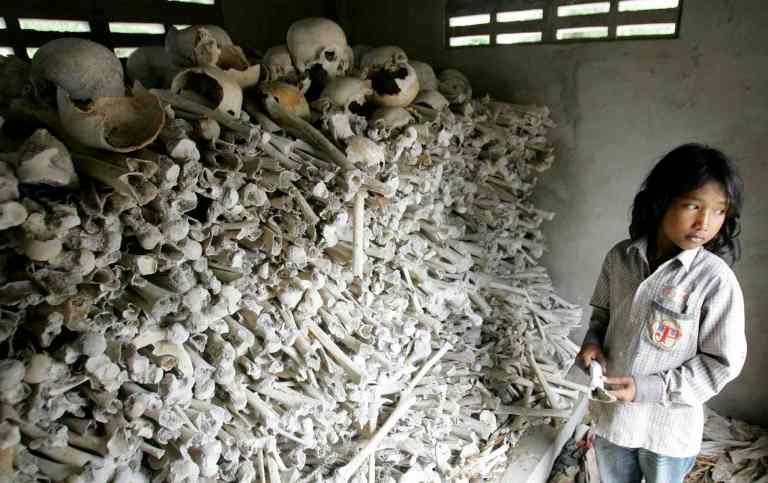Following the genocide in Cambodia, communist Vietnam invaded the capital of Cambodia, Kampuchea in 1978. Vietnam overthrew the Khmer Rouge, forcing them into thick jungles and into countries such as China and Thailand. Vietnam set up a quick government for the people of Cambodia however because the government was not set in stone it was difficult for the country to begin rebuilding. Pol Pot pushed away any ally they could have had as a country and killed off all the highly skilled citizens.
What may come as a surprise is that America actually helped the Khmer Rouge maintain their position on a global level. As many as 20,000 to 40,000 members of the Khmer Rouge who had fled managed to make it to other countries where they were given food, shelter and any kind of relief needed by American agencies. The United Kingdom also backed the Khmer Rouge because on a global stage it was seen as having to choose between a communist Vietnam and the Cambodian Khmer Rouge. Instead of the “Pop-up” government Vietnam put into place taking the chair of Cambodia at the United Nations, America made sure of it to make the Khmer Rouge maintain their chair.
The United States and the United Kingdom continued to train the Khmer Rouge in military tactics and weaponry, this caused any kind of rebuilding of the country to be pushed off for many years to come. The United States put economic sanctions on Cambodia that blocked any source of help for Vietnamese troops, who at the time were being supported by the Soviet Union.
Between 1978 and 1989 the fight between the Khmer Rouge and Vietnam resulted in 65,000 deaths, 14,000 were civilians.

Finally the country began rebuilding, the national religion, Buddhism, was once again. In 1991, the two opposing groups singed a peace agreement, which lead to the 1993 democratic elections that elected the former monarch, Prince Sihanouk.
By 1995 the reality of the genocide began to set in for the country and the world. Mass graves started to be uncovered, with each bone and skull they found it was placed in Phnom Penh, which was the major site of the killings, as a memorial to all the victims who died.
Pol Pot finally died in 1998 of natural causes in a jungle where he had fled and lived out the rest of his life.

